IS YOUR COUNCIL SPRAYING POISON?
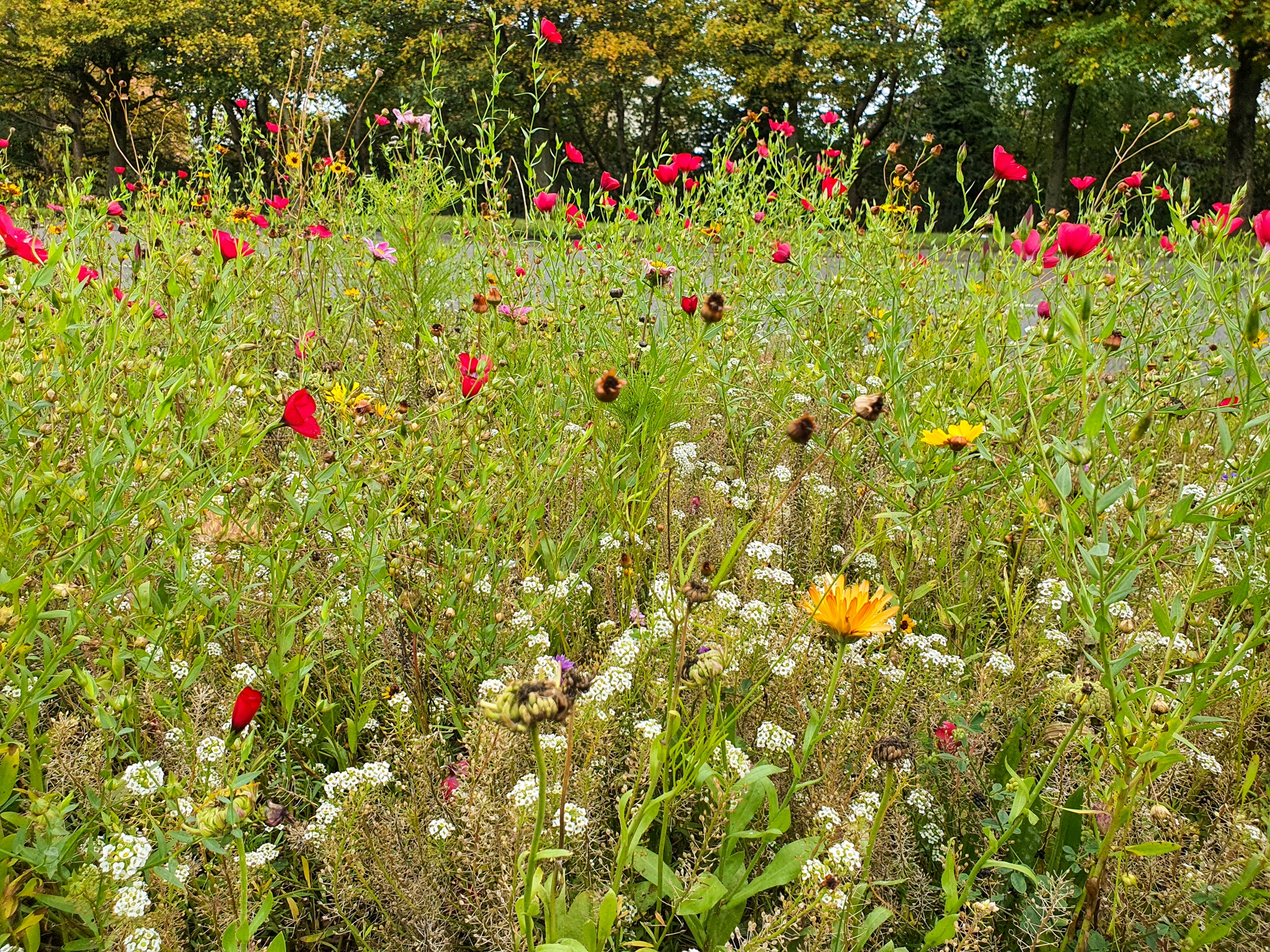
This is the time of year when local authorities start spraying herbicides as part of their management of green spaces and shared areas. If you’ve seen your local council with tanks of chemicals near the play park or on your kids’ walk to school and you’re concerned about the effect this could have on health, or if you’ve noticed them spraying wild flowers and are worried about spiralling biodiversity loss - or even just if you’re not sure what you should be worried about, but you’re sure it’s not right, here’s what you need to know.
WHAT’S THE CONTEXT?
Before we get into weighing up the council’s aims with the concerns I’m going to outline, it’s important to do that balancing act with the context in mind.
We are in the midst of what Elizabeth Kolbert describes as the Sixth Extinction. Since 1966, Britain has lost 44 million breeding birds, including the loss of 50 sparrows every single hour for the last 50 years.
Worldwide, the number of fish, birds, reptiles and mammals has declined by 58% since 1970, and Britain has the unsavoury accolade of being the European country that has driven the most species to the brink of extinction.
According to the 2019 State of Nature report, 15% of species are threatened with extinction from Britain and 133 have already become extinct since 1970.
WHAT ARE COUNCILS DOING?
Sadly, many local councils are contributing to our spiralling biodiversity loss. A key aspect of this is over-use and indiscriminate use of herbicides (weedkillers).
In the height of lockdown, I watched a council worker travelling around the streets and green spaces of my local area on a motorised buggy, spraying weedkiller onto anything that had dared to grow in amongst the sea of grey concrete.
The pretty yellow flowers around the bottom of the postbox, the delicate little daisies around the edge of the path, the beautiful white cow parsley under the hedge, all sprayed into oblivion along with all of the insects living on them and, indirectly, the birds, bats and hedgehogs that depend on those insects.
A few weeks later, I saw another worker spraying weedkiller along the front of the approach to my local secondary school. There were no ‘problematic’ weeds there - no invasive species, no dangerous species, nothing that would cause a trip hazard or any damage, nothing tall or that was anywhere near becoming unmanageable. Not even nettles - just buttercups, daisies, dandelions and campion on the space at the side of the pavement. A few days later, the small wildflowers there had withered away into sad brown clumps and the path was bordered by bare soil instead.
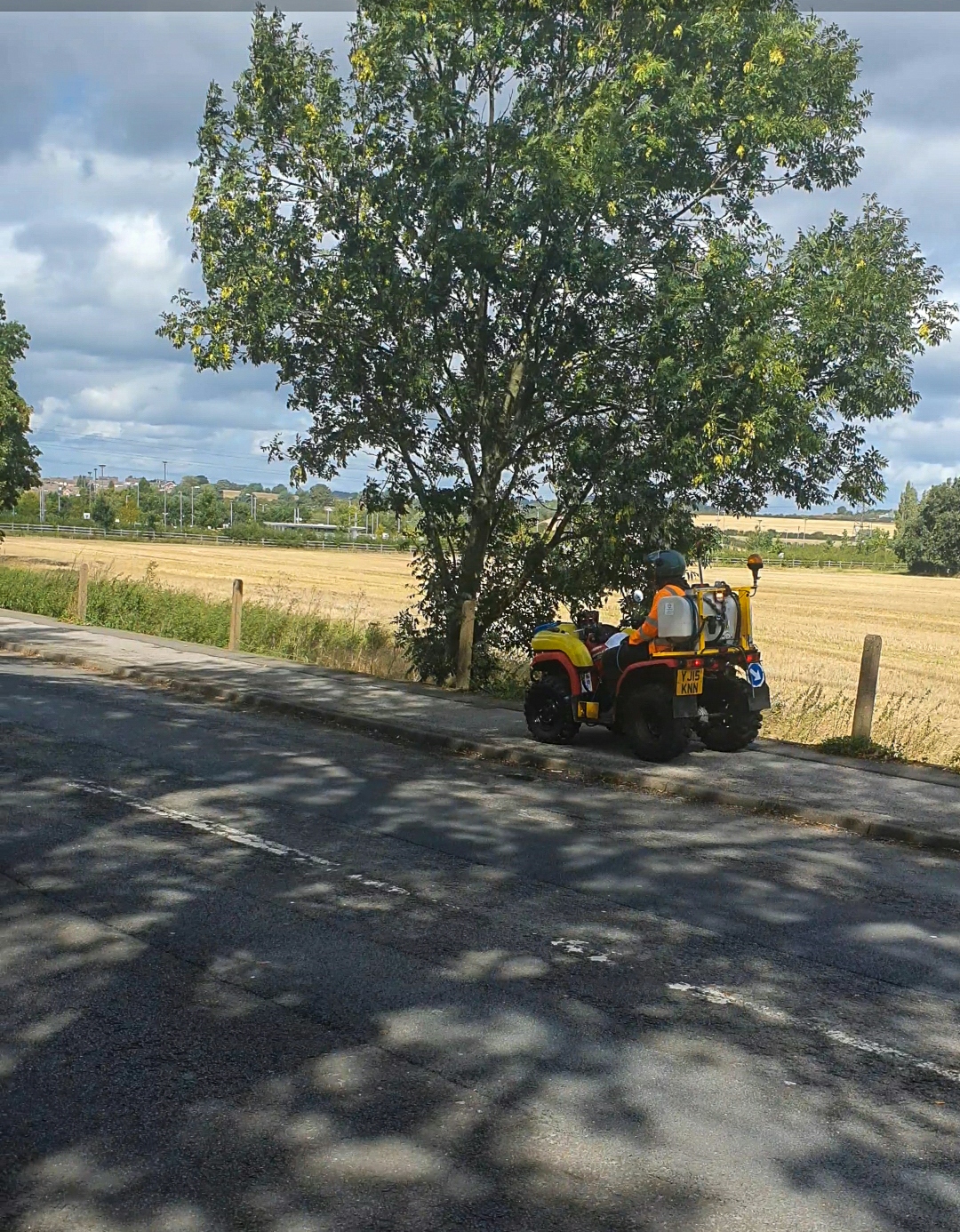
THE HEALTH RISKS
There are numerous studies showing the dangers of herbicides to human health - far too many to bore you with here. The things is, there isn’t even really a need to delve into the scientific journals to appreciate the risks associated with use of weedkiller.
High profile cases like that of cancer-sufferer Dwayne Johnson are on the rise. Johnson was awarded $289 million in damages from his employer after a court found that his cancer was caused by the weedkiller he used as part of his job. As well as cases against employers, there have been tens of thousands of claims against Bayer, the company that makes Roundup, a popular herbicide. Bayer has now agreed to pay $10 billion in compensation to people who are suffering from cancer as a result of exposure to the weedkiller.
Roundup is a glyphosate-based weedkiller. Glyphosate is used by many councils across the UK, despite it being banned in public places in many cities around the world and banned entirely in eight countries because of the harmful and carcinogenic effect it has on humans.
THE WORST PART
The saddest and most frustrating aspect of local councils’ use of carcinogenic chemicals on our shared spaces is that it is entirely unnecessary.
I spend a lot of time walking and running around my local area and weeds are truly not a problem, even between the council’s chemical-dousing sessions or in areas where the councils’ herbicides don’t wreak havoc.
The ‘weeds’ most urban areas have are primarily small wildflowers that cause no damage to the concrete or ground that they grow in, pose no risk to health, do not grow excessively tall or large, and offer a pretty respite from grey concrete roads and pavements as well as important food and habitat for our rapidly declining wildlife.
I’ve even seen my local council ‘tackling’ wildflowers growing beneath hedges. What kind of problem can a wildflower growing under a hedge at the edge of a park possibly pose?
Here's an example of one of the pavement wildflowers my local council was waging war on the last time I saw them spraying weedkiller:
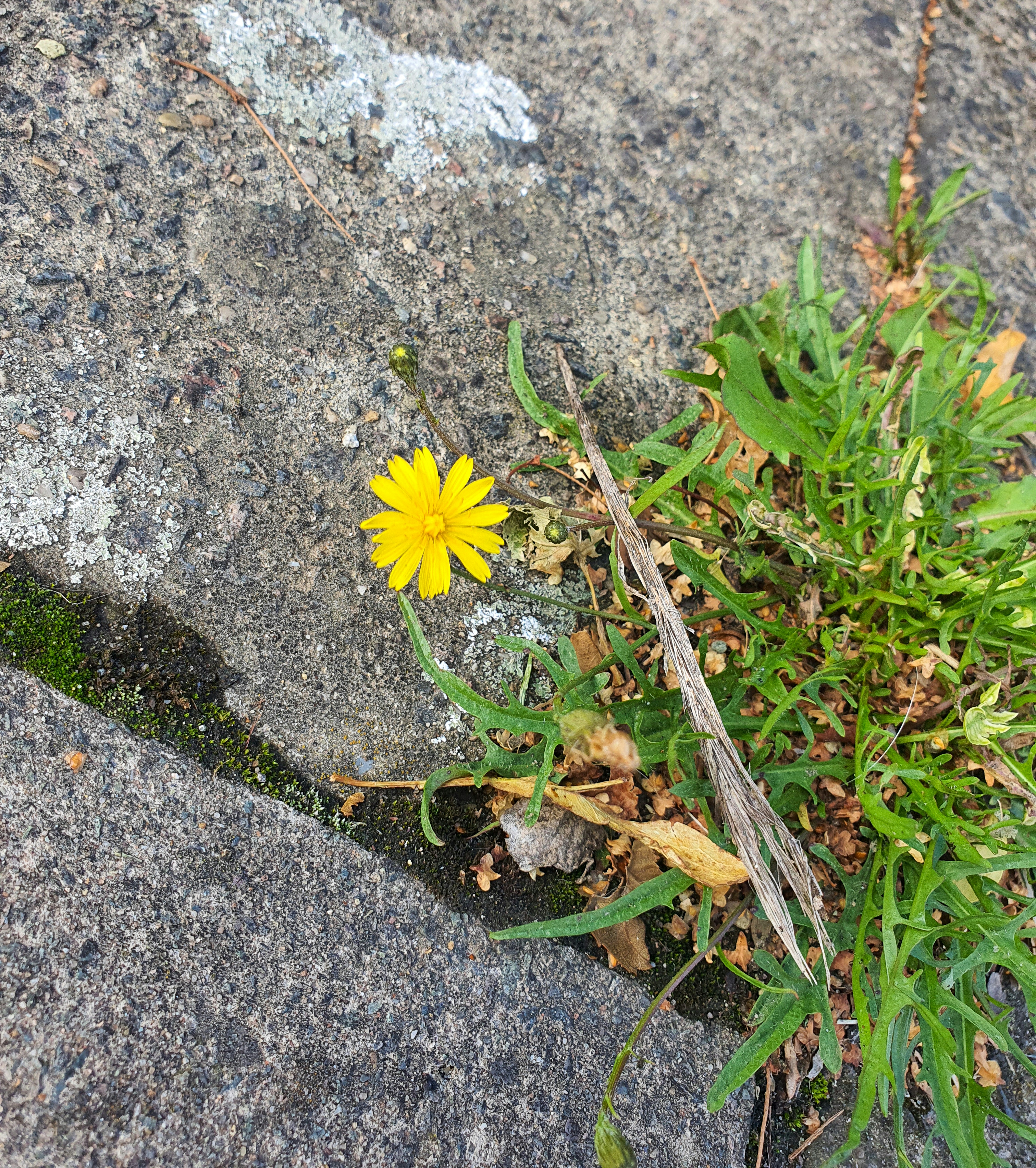
WHY DO THEY DO IT?
Much of the drive behind local councils’ actions derives from what Benedict Macdonald refers to as ‘Ecological Tidiness Disorder’ - the obsession we seem to have, largely unique among European countries, of sterilising our natural environment so that it becomes a ‘tidy’ dead zone with minimal biodiversity.
The relentless cutting of hedges, chemical dousing of wildflowers, over-mowing of grasses and tidying of edges is massively impacting British wildlife. Most of our insectivorous birds do best in ‘scruffy’ or ‘untidy’ margins - the areas under bushes and at the edges of fields that are filled with wildflowers, longer grass and small shrubs. As I explained here, even birds that don’t rely on insects themselves need insects to feed their young - so destroying the plant life that supports insects impacts birds’ ability to successfully raise the next generation. Areas like this are also of critical importance to our beloved hedgehogs, which are set to go extinct before 2025 if we don’t turn things around.
Despite the benefit and beauty of these more natural areas and the wildlife that they support, many councils spend taxpayer money removing every last wildflower, bramble, shrub and log pile from our shared spaces.
Even parks aren’t safe
If you visit my local park, you’ll see a huge open space with plenty of capacity for short, open lawns for playing sport and having picnics alongside lots of space for habitats of longer grass, shrubbery, wildflowers and log piles.
But this is not what you see. What you see is a dead-zone - wall-to-wall (or boundary-to-boundary) is covered with short grass. Wild plants growing beneath hedges, bushes and trees are removed or covered in weedkiller, and even areas where none of us would want or need short grass (like between trees, on steep slopes, on a strip next to a path not wide enough for activities, or in the corners) are mowed to within an inch of their life and stripped of any natural growth. What we’re left with is a boring park area with nothing of interest to look at, where you can sit for hours without seeing a single bee, butterfly or bird.
Instead of providing residents with areas of varying types and the associated richness of experience that brings in allowing people to watch wildlife or look at flowers, many councils are focused on providing one type of view only: short, plain grass.
Maybe this is what people want, though? Perhaps - the residents themselves might be afflicted with Ecological Tidiness Disorder. But I have hope that most people aren’t - because if people are desperate for monoculture grass more than wilder areas, why do people pile into nature reserves every weekend? Recently, Attenborough Nature Reserve has had a one-in-one-out queue at lunch times during the week, with people queueing just to spend their lunch break somewhere more wild, somewhere they can watch wildlife. If people preferred empty grass, wouldn’t they be flocking to the local parks that surround the Nature Reserve instead?
I expect that the view of local councils that wilder areas like patches of wildflowers or longer grass are ‘messy’ and to be controlled is a combination of the slow gears of local government grinding to catch up with popular sentiment and counsellors pandering to a small number of vocal residents asking for over-tidiness.
Roadside verges
Whilst some will argue that councils zapping all non-grass life in a park is a utilitarian way to maximise the usable space, and whilst this argument is clearly challengeable, the most baffling example of councils’ Ecological Tidiness Disorder is their treatment of roadside verges.
Let’s be clear - roadside verges have no utilitarian value. Nobody is going to be eating a picnic or playing a game of football at the side of the A52. They’re not big enough to pose any value for humans in terms of recreation. They can be left to their own devices all year round, with just one mow each year to stop them becoming overgrown. They will naturally be colonised by long grasses and wildflowers.
This seems like a great, low-cost, low-maintenance option for councils, right? So why do councils spend taxpayer money having roadside verges mowed and/or doused in costly chemicals every few weeks all spring and summer?
The answer can only be that they think that an area of short monoculture grass, or an area of bare poisoned soil, looks better than an area of wildflowers. But how can this be said to improve the appearance of our public spaces when it replaces yellow, purple, white, pink and blue flowers and beautiful pollinators and birds with brown mud, dead cuttings, and barren grass?
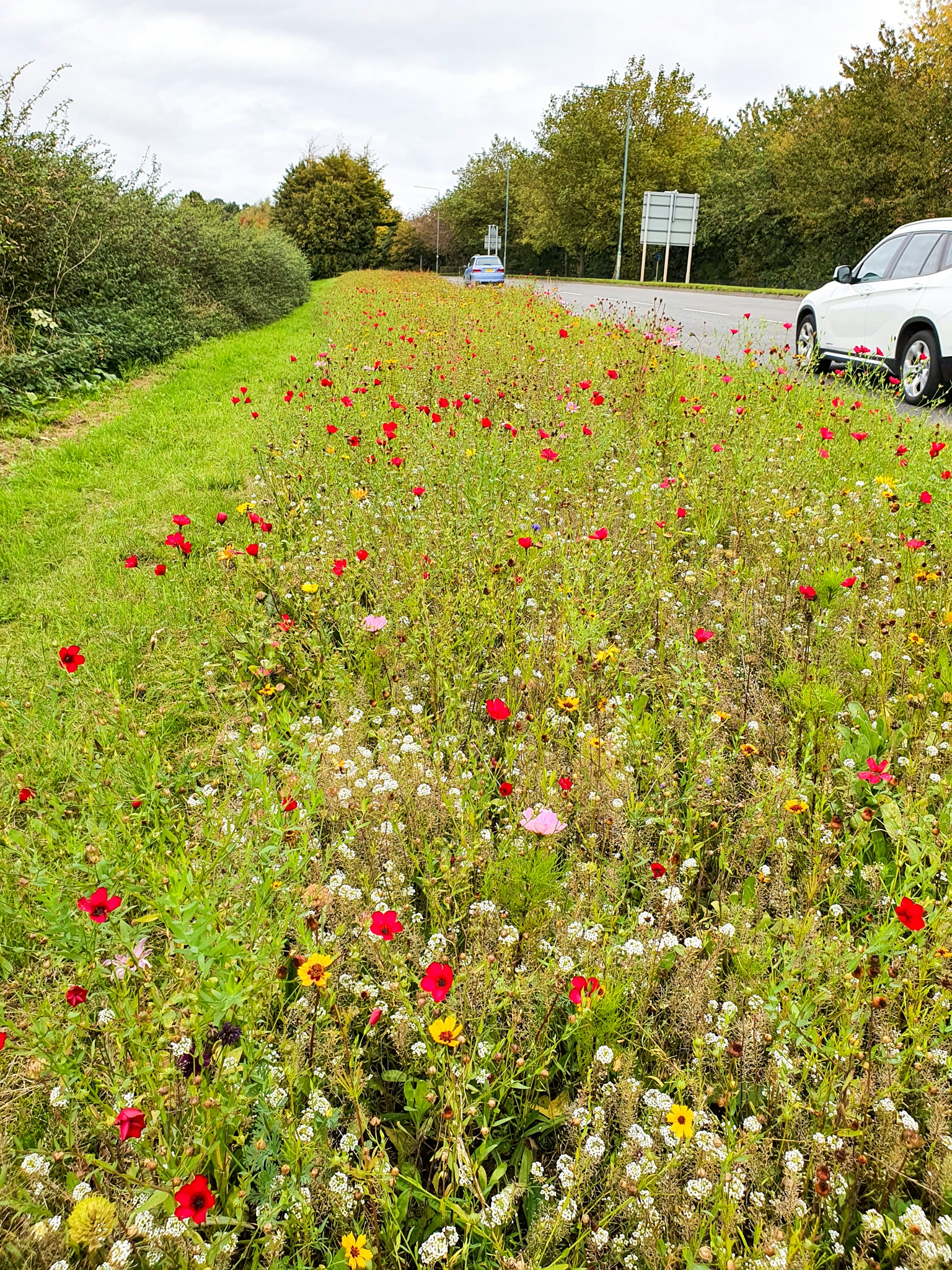
THE REAL KICKER
Okay, so I said the worst part was that it’s all unnecessary - but perhaps even worse than that is the fact that this all costs us money.
All of this spraying of weedkiller and ‘tidying’ of our natural environment is paid for by taxpayers. Every penny spent on spraying cancer-causing glyphosate on your child’s path to school is a penny that can’t be spent on anything else.
My local council haven’t yet provided me with costing information for these practices - and the cost will vary by location - but it can’t be cheap. The council will need to payroll employees to spray the weedkiller, buy or lease and run the vehicles, purchase the chemical itself and personal protective equipment for their staff, and pay to insure against the risk of employee liability claims by their operatives (given the huge volume of cases won by employees whose cancer was caused by weedkiller).
WHAT COULD COUNCILS DO BETTER?
Right, it’s time to stop slamming local councils (who are often just trying to please voters who themselves are afflicted with Ecological Tidiness Disorder) and look at the positives.
Public sector spending on biodiversity has declined 42% since 2008/9, and this means that it’s more important than ever that the money that councils do have is spent on practices that benefit biodiversity and so ultimately benefit constituents. And some councils are doing just that!
I’ve written a post here setting out 10 things local councils can do for free or low cost to improve biodiversity.
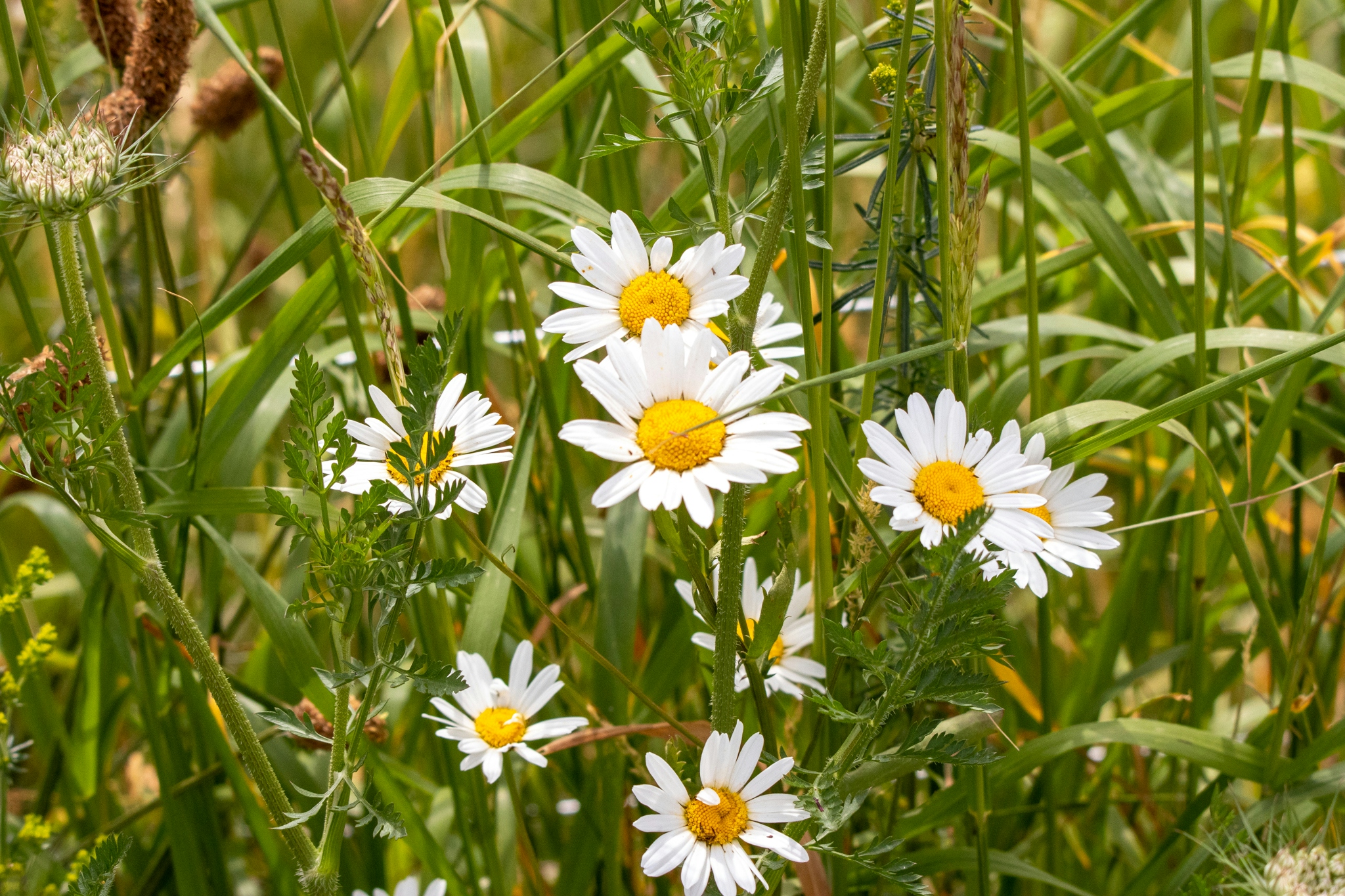
RESOURCES
On the Bayer settlements: https://www.nytimes.com/2020/06/24/business/roundup-settlement-lawsuits.html
On leaf blowers: https://www.independent.co.uk/climate-change/news/leaf-blowers-insect-noise-pollution-germany-gardening-a9208366.html
The State of Nature Report: https://nbn.org.uk/stateofnature2019/reports/
KOLBERT, E., 2014. THE SIXTH EXTINCTION. BLOOMSBURY PUBLISHING
MACDONALD, B., 2020. REBIRDING. PELAGIC PUBLISHING
CABALLOS G., EHRLICH, P.R. & DIRZO, R. 2017. Biological annihilation via the ongoing sixth mass extinction signaled by vertebrate population losses and declines. Proceedings of the National Academy of Sciences 114: E6089-E6096
On Dwayne Johnson’s case: https://www.theguardian.com/business/2018/aug/11/one-mans-suffering-exposed-monsantos-secrets-to-the-world
On hedgehog numbers: ROOS, S., JOHNSTON, A. & NOBLE, D. 2012. UK hedgehog datasets and their potential for long-term monitoring. BTO Research Report No. 598
Share with your friends
Subscribe to learn more
Join me in learning about our natural world and how we can protect and restore it. Get notified on my latest posts and a monthly newsletter on wider conversation topics for us to chat about.
Recent Posts
If you enjoyed this one, then you might like these too.